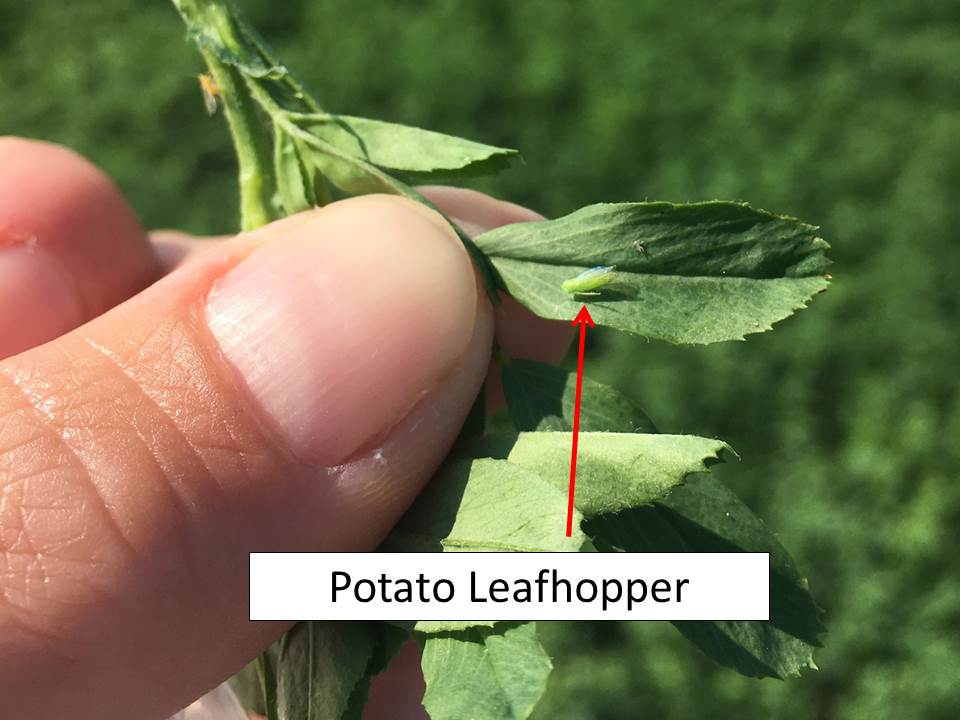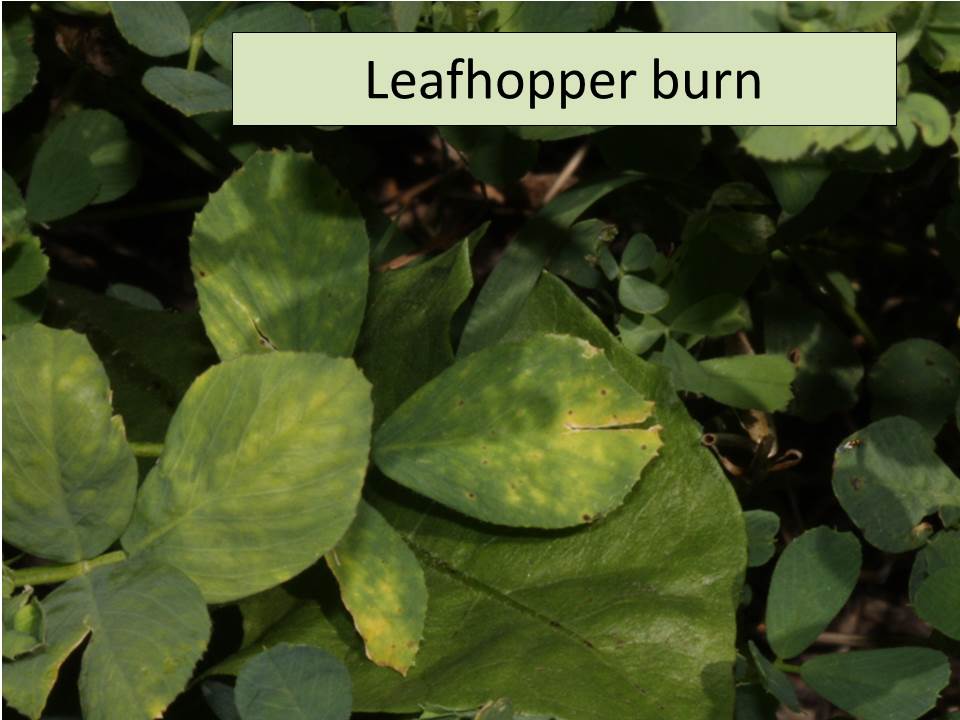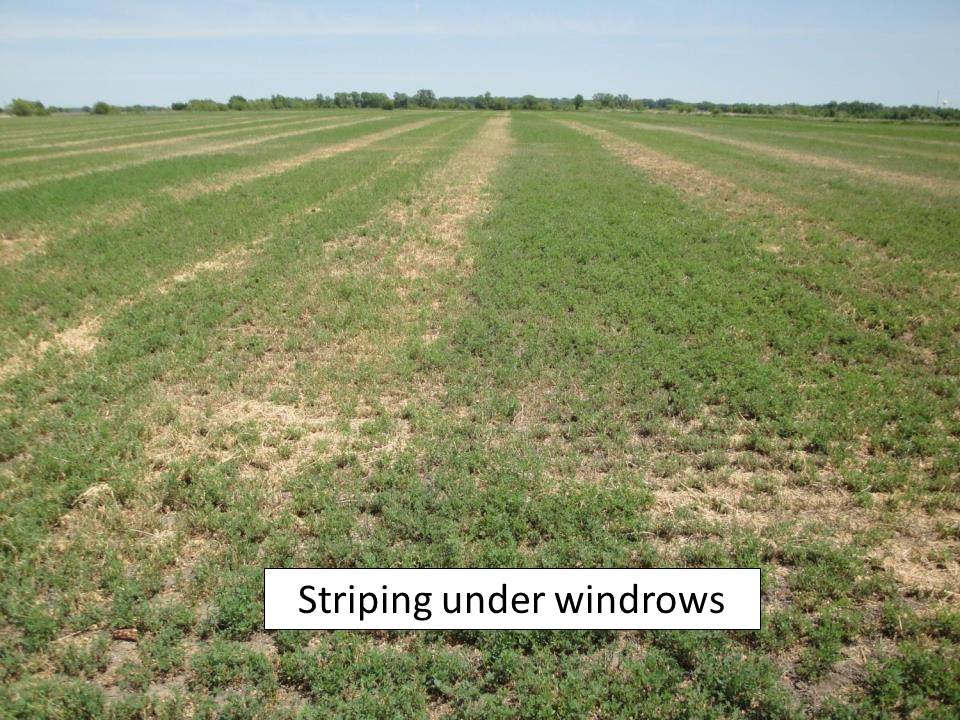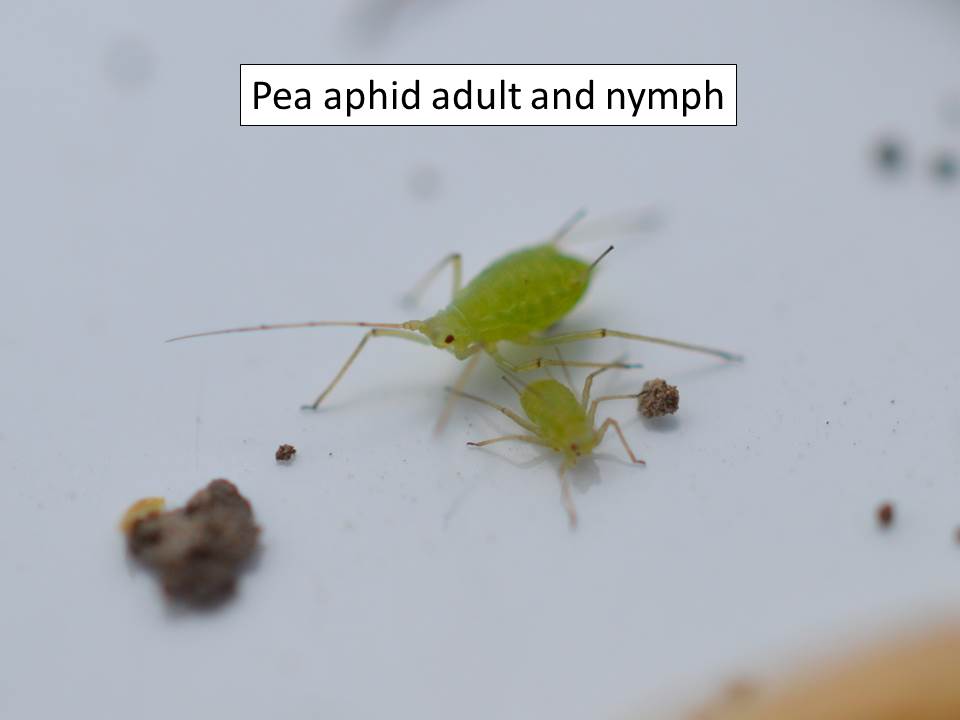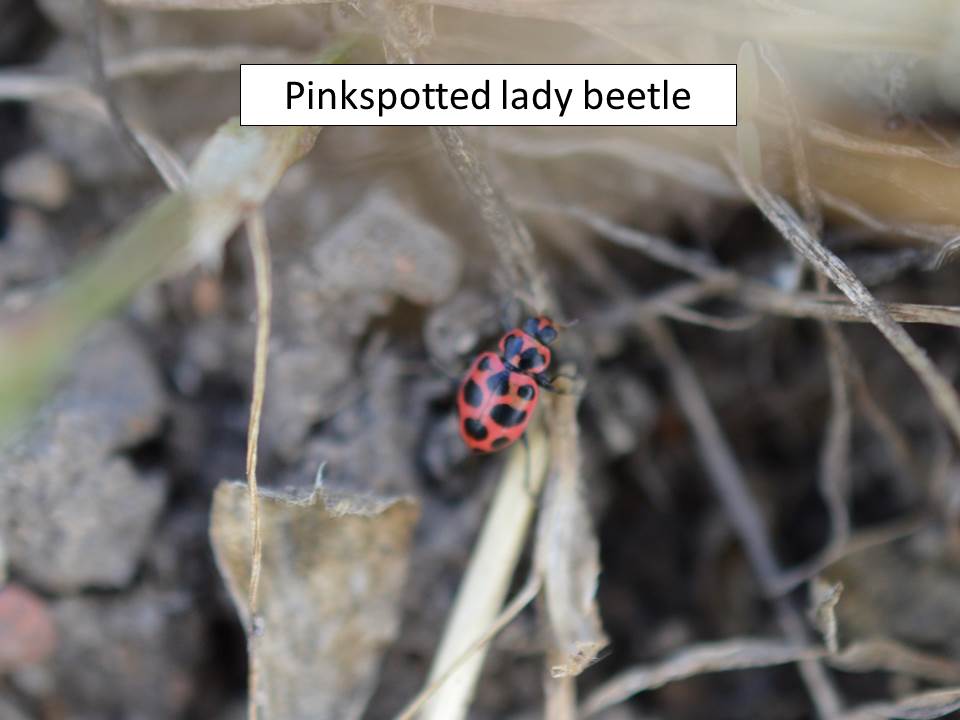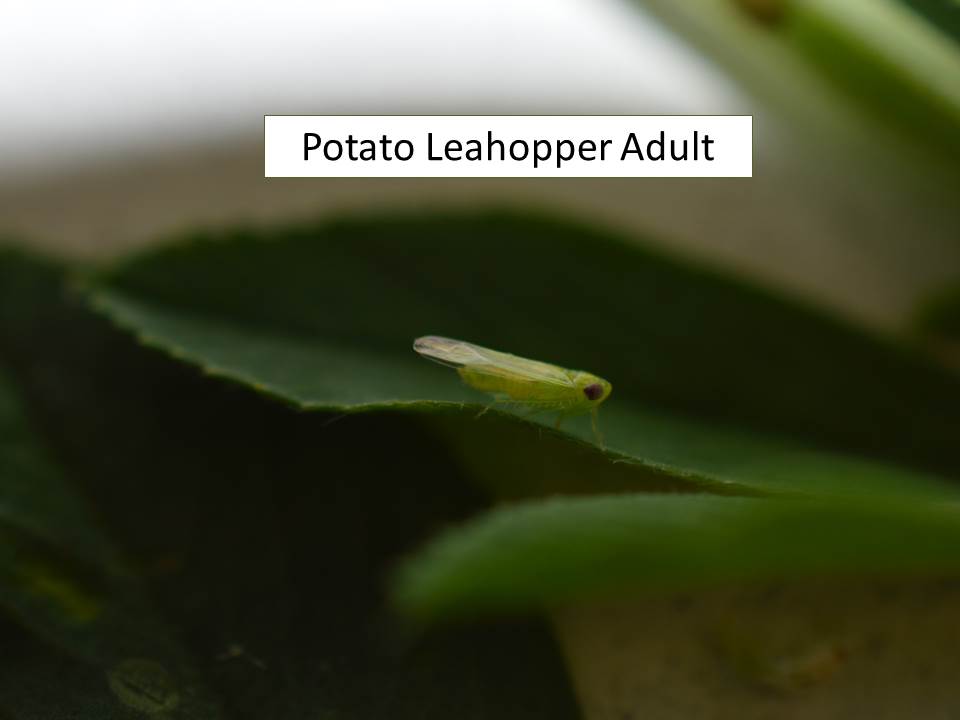–by Dr. Jeff Whitworth and Dr. Holly Schwarting
Potato leafhoppers are still common in all alfalfa fields sampled in the last 7-10 days, unless they have been swathed during that period of time. Fields swathed within the last week did not have enough potato leafhoppers to reach a treatment threshold. However, fields swathed just 10-14 days earlier are once again loaded with these little lime green, wedge-shaped leafhoppers.
There do seem to be good populations of green lacewings in uncut alfalfa fields. However, they do not appear to be impacting the potato leafhopper populations. We did pick up one alfalfa weevil larva and one adult in an uncut alfalfa field but the alfalfa weevils should not be of concern as major defoliators until next spring.
